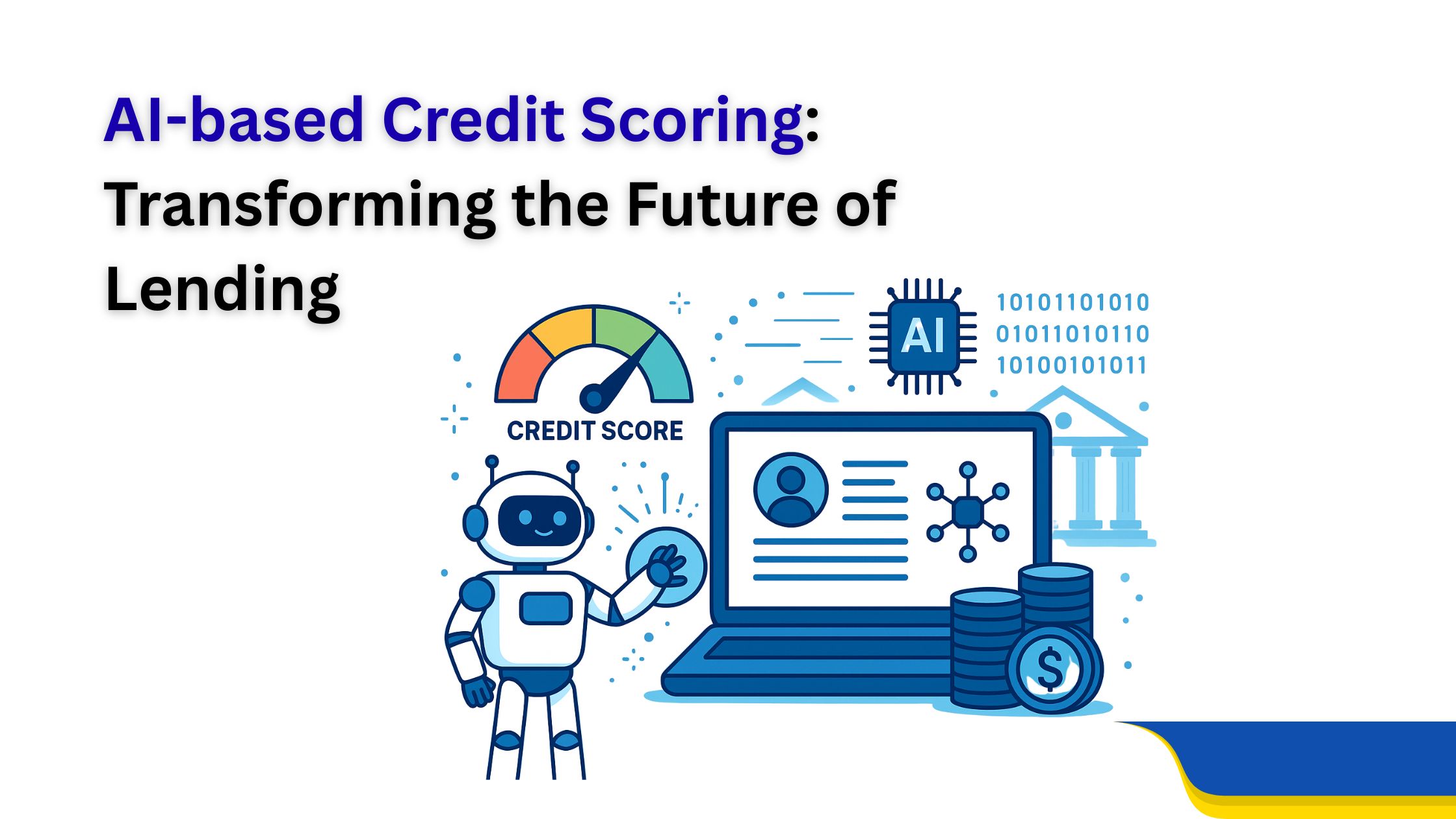
Credit scoring has long been the backbone of lending decisions for banks, NBFCs, and fintechs. Traditional models—like FICO or CIBIL—depend heavily on historical repayment data, static rules, and rigid scoring frameworks. While these models served their purpose, they often fail to provide real-time, holistic, and fair evaluations of borrowers in today’s dynamic financial environment.
This is where AI-based credit scoring is reshaping the landscape. By leveraging artificial intelligence (AI) and machine learning (ML), financial institutions can assess creditworthiness faster, more accurately, and inclusively—opening access to credit for underserved segments while minimizing risks.
What is AI-based Credit Scoring?
AI-based credit scoring uses machine learning algorithms, deep learning models, and alternative data sources to evaluate a borrower’s creditworthiness. Unlike traditional scoring systems that rely on a fixed set of financial history records, AI models dynamically learn from diverse datasets such as:
- Banking transactions (income, spending habits, savings trends)
- Digital footprints (e-commerce history, bill payments, mobile usage)
- Behavioral patterns (repayment behavior, loan application frequency)
- Demographic and socio-economic data (geographic, employment, or sector trends)
This allows lenders to go beyond “credit history” and understand a person’s real repayment ability in real time.
Why Traditional Credit Scoring is Not Enough
- Limited Data Coverage – Traditional models exclude individuals with little or no credit history (the “credit invisible”).
- Rigid and Outdated – Static rules fail to capture changing economic conditions and borrower behavior.
- Bias and Inequality – Manual scoring often introduces bias, restricting credit access to underserved populations.
- Slow Decision-Making – Traditional credit checks are time-consuming and reduce customer experience.
Key Benefits of AI-based Credit Scoring
1. Improved Accuracy
AI models continuously learn from new data, detecting subtle patterns that humans and legacy systems might miss. This reduces false positives (rejecting good borrowers) and false negatives (approving risky borrowers).
2. Faster Loan Approvals
With real-time risk assessment, lenders can approve loans within minutes—improving customer experience and operational efficiency.
3. Financial Inclusion
AI enables the evaluation of borrowers without credit history by analyzing alternative datasets, thus empowering gig workers, SMEs, and first-time borrowers.
4. Fraud Detection & Risk Mitigation
Machine learning models can detect anomalies (e.g., unusual spending patterns or identity mismatches), minimizing default risks and fraud.
5. Regulatory Compliance
AI-driven systems support transparent audit trails, helping institutions align with AML, KYC, and data privacy regulations across regions.
Use Cases of AI-based Credit Scoring
- Retail Banking – Assessing individual borrowers for personal loans, mortgages, and credit cards.
- SME Lending – Evaluating small and medium enterprises with limited financial history but strong alternative data signals.
- Microfinance & BNPL – Powering instant credit for underserved populations and Buy Now Pay Later models.
- Insurance Underwriting – Assessing customer risk profiles for tailored premium pricing.
- Digital-First Fintechs – Offering instant loan approvals and seamless customer experiences.
Challenges in AI Credit Scoring
While powerful, AI-based scoring is not without challenges:
- Data Privacy & Security – Handling sensitive financial and personal data responsibly.
- Model Transparency – Ensuring explainability of AI decisions for regulators and customers.
- Bias in AI Models – Avoiding algorithmic bias if training datasets are skewed.
- Regulatory Approval – Adapting AI credit scoring to evolving global compliance frameworks.
AI-based Credit Scoring vs Traditional Credit Scoring
| Aspect | Traditional Scoring | AI-based Scoring |
| Data Used | Historical repayment & credit history | Historical + alternative data (transactions, digital, behavioral) |
| Speed | Hours to days | Real-time (minutes) |
| Coverage | Excludes credit invisibles | Includes underserved, gig workers, and SMEs |
| Accuracy | Static, rule-based | Adaptive, ML-driven |
| Bias | Human judgment & systemic bias | Algorithmic fairness (if trained correctly) |
Future of AI-based Credit Scoring
The future is moving toward explainable AI (XAI) and real-time adaptive scoring models. Integration with conversational AI, AI-driven fraud detection, and enterprise LLMs will make credit scoring more transparent, scalable, and customer-centric.
As digital payments and alternative lending platforms expand, AI credit scoring will become the new industry standard—not just for banks and NBFCs, but across fintechs, insurers, and even e-commerce ecosystems.
Why Choose AIVeda for AI-based Credit Scoring Solutions?
At AIVeda, we help financial institutions transform their lending processes with custom AI solutions. Our expertise includes:
- AI Chatbots for Finance – Seamless loan applications and customer interactions.
- Conversational AI for Compliance – Assisting with AML/KYC processes.
- Enterprise LLMs – For explainable, transparent AI credit scoring models.
- Custom AI Development – Tailored risk models for banking, NBFCs, and fintechs.
We’ve been recognized among the Top 3 AI companies in India by DesignRush and GoodFirms, making us a trusted partner for AI transformation.
Explore our AI Solutions for Finance
Learn more about our AI Chatbot Development Services
Conclusion
AI-based credit scoring is revolutionizing the way lenders assess risk, improve efficiency, and expand financial inclusion. By moving beyond traditional credit history and embracing alternative datasets, financial institutions can make lending faster, fairer, and more accurate.
At AIVeda, we empower organizations with AI-driven credit scoring and compliance solutions that ensure accuracy, transparency, and scalability. Whether you are a bank, fintech, or NBFC, our AI expertise can help you stay ahead in the future of digital lending.